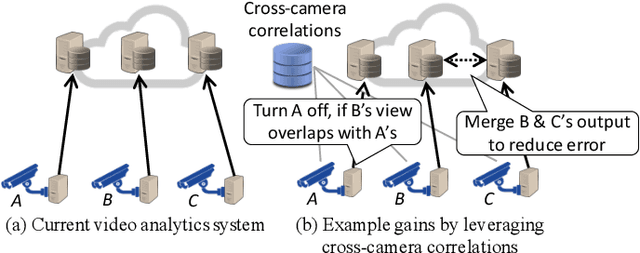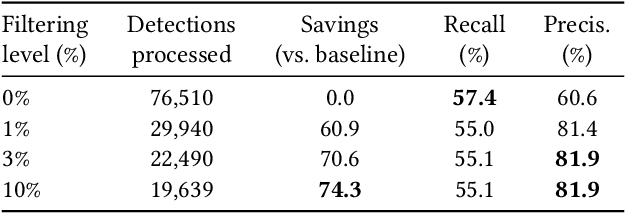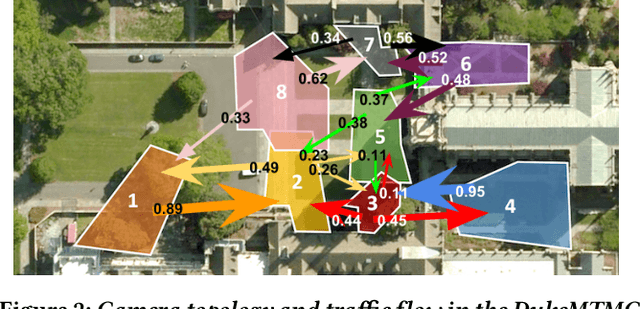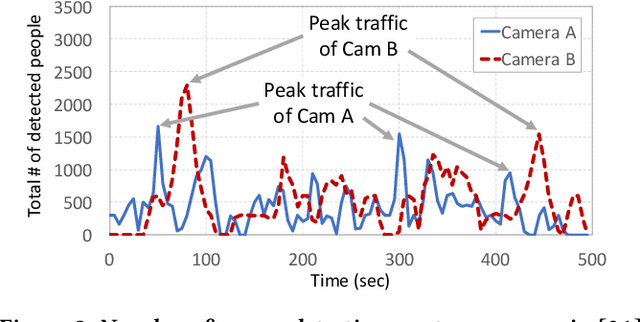Scaling Video Analytics Systems to Large Camera Deployments
Paper and Code
Nov 03, 2018



Driven by advances in computer vision and the falling costs of camera hardware, organizations are deploying video cameras en masse for the spatial monitoring of their physical premises. Scaling video analytics to massive camera deployments, however, presents a new and mounting challenge, as compute cost grows proportionally to the number of camera feeds. This paper is driven by a simple question: can we scale video analytics in such a way that cost grows sublinearly, or even remains constant, as we deploy more cameras, while inference accuracy remains stable, or even improves. We believe the answer is yes. Our key observation is that video feeds from wide-area camera deployments demonstrate significant content correlations (e.g. to other geographically proximate feeds), both in space and over time. These spatio-temporal correlations can be harnessed to dramatically reduce the size of the inference search space, decreasing both workload and false positive rates in multi-camera video analytics. By discussing use-cases and technical challenges, we propose a roadmap for scaling video analytics to large camera networks, and outline a plan for its realization.
 Add to Chrome
Add to Chrome Add to Firefox
Add to Firefox Add to Edge
Add to Edge